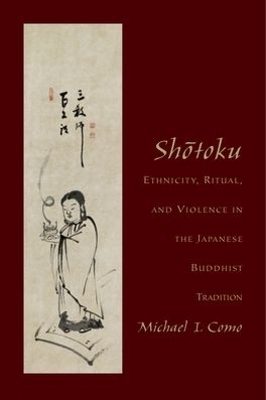
Shotoku
Ethnicity, Ritual, and Violence in the Japanese Buddhist Tradition
Seiten
2008
Oxford University Press Inc (Verlag)
978-0-19-518861-5 (ISBN)
Oxford University Press Inc (Verlag)
978-0-19-518861-5 (ISBN)
Prince Shotoku, the purported founder of Japanese Buddhism, was one of the greatest cultural icons of pre-modern Japan. This book examines the creation and evolution of the Shotoku cult. It highlights the activities of a cluster of kinship groups who claimed descent from ancestors from the Korean kingdom of Silla.
Prince Shotoku (573?-622?), the purported founder of Japanese Buddhism, was one of the greatest cultural icons of pre-modern Japan. The cult that grew up around his memory is recognized as one of the most important religious phenomena of the time. This book examines the creation and evolution of the Shotoku cult over the roughly 200 years following his death - a period that saw a series of revolutionary developments in the history of Japanese religion. Como highlights the activities of a cluster of kinship groups who claimed descent from ancestors from the Korean kingdom of Silla. By comparing the ancestral legends of these groups to the Shotoku legend corpus and Imperial chronicles, Como shows that these kinship groups not only played a major role in the formation of the Japanese Buddhist tradition, they also to a large degree shaped the paradigms in terms of which the Japanese Imperial cult and the nation of Japan were conceptualized and created.
Prince Shotoku (573?-622?), the purported founder of Japanese Buddhism, was one of the greatest cultural icons of pre-modern Japan. The cult that grew up around his memory is recognized as one of the most important religious phenomena of the time. This book examines the creation and evolution of the Shotoku cult over the roughly 200 years following his death - a period that saw a series of revolutionary developments in the history of Japanese religion. Como highlights the activities of a cluster of kinship groups who claimed descent from ancestors from the Korean kingdom of Silla. By comparing the ancestral legends of these groups to the Shotoku legend corpus and Imperial chronicles, Como shows that these kinship groups not only played a major role in the formation of the Japanese Buddhist tradition, they also to a large degree shaped the paradigms in terms of which the Japanese Imperial cult and the nation of Japan were conceptualized and created.
Michael Como is Fukami Professor of Shinto Studies at Columbia University.
| Erscheint lt. Verlag | 24.4.2008 |
|---|---|
| Verlagsort | New York |
| Sprache | englisch |
| Maße | 160 x 239 mm |
| Gewicht | 544 g |
| Themenwelt | Geisteswissenschaften ► Geschichte ► Regional- / Ländergeschichte |
| Geisteswissenschaften ► Religion / Theologie ► Buddhismus | |
| ISBN-10 | 0-19-518861-6 / 0195188616 |
| ISBN-13 | 978-0-19-518861-5 / 9780195188615 |
| Zustand | Neuware |
| Haben Sie eine Frage zum Produkt? |
Mehr entdecken
aus dem Bereich
aus dem Bereich
Erinnerungen
Buch | Softcover (2024)
Pantheon (Verlag)
16,00 €
Universalgelehrter, Polarreisender, Entdecker
Buch | Hardcover (2024)
mareverlag
28,00 €


